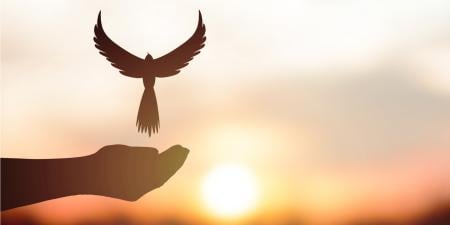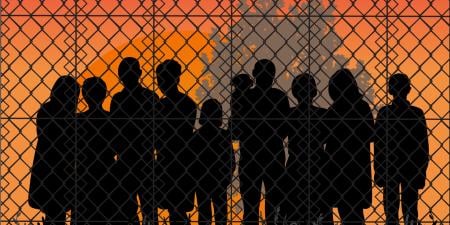Case
Joni had looked forward to her second-look medical school visit with excitement; this school had been her top choice throughout the application process. The first in her family to finish college, Joni felt as if she was carrying enough hopes and expectations for ten people. She was pushing through her last courses with characteristic tenacity. And every day this week, she had worn the silver and turquoise squash blossom necklace that her grandmother gave her before she left for school.
Now, she stood with her fellow accepted students in a cold room with tiled floors, necklace stashed away and her long black hair tied back. The students were passing around a prosection that one of the teaching assistants had given them. It was small and firm, a dusky red—as it got closer, Joni could see that it was a heart. When it got to her, she felt her gloved hands leave her side almost automatically. Then she stopped, quickly shook her head and motioned to the student next in line. Her classmate hesitated for a moment and stood holding the heart, but after a moment passed it in front of Joni to the next student at the tank.
Later that day Joni walked into the lab director’s office. She shook his hand and introduced herself.
“Welcome. Hope you’ve had a good day so far. What is it you would like to talk to me about?” he asked.
Joni was quiet, then gathered her courage. “I’m Navajo. Our cultural beliefs do not allow us to touch dead bodies,” she said gently.
The lab director seemed genuinely puzzled. “Well, I don’t think that this is something that we have encountered before. We have had one or two students find out that they were bothered by the lab, but we always worked through that discomfort…it was an important learning experience.”
Commentary
This case illustrates a dilemma that many Navajo students face when they train to become physicians or health professionals. This commentary describes the challenges associated with this dilemma and provides a framework for it.
The most common method of teaching anatomy in medical schools involves the use and dissection of human cadavers. Navajo students from families that still retain traditional practices will find it disturbing to handle cadavers. It is said that spirits are present near the bodies, and that the evil, or negative part of a person stays with the body. Some will also have difficulty being in places where death resides, and some will be unable to participate because of their beliefs. Clearly, this scenario raises difficulties for the student and the instructor as well as for the school. How does the student continue with her training without violating the beliefs of her culture? Does this constitute a conscience- based objection (CBE)? Is her request a reasonable one?
Most discussions of conscientious objections in medicine have focused on issues such as animal rights, abortion, family planning, and other matters based on an individual’s religion. For the case in question, the student’s objection is similar to an objection on the basis of religion; in the Navajo worldview, culture and religion are tightly intertwined, making this a conscience-based objection. The practice of using cadavers is in direct opposition to traditional Navajo cultural and religious beliefs that dead bodies should not be handled.
This dilemma has prevented some Navajo students from attending medical school because they would not be able to touch a cadaver. They may be unaware that there are alternative ways to teach anatomy without using cadavers, and they do not expect that anyone (who is not Native) would make an effort to understand their culture and beliefs. The history of interactions between western civilizations and indigenous cultures has only recently attained a level of tolerance and inclusion.
A denial of this student’s request would force the student to make a choice between giving up pursuing her profession and violating the rules she lives by. Navajo students who make the choice to handle a cadaver may find themselves facing significant psychological struggles, at the very time when their energy is needed to focus on their classes. At a more subtle level, students will find it difficult to be fully themselves.
Students from many minority communities may experience daily challenges related to the cognitive dissonance associated with navigating multiple cultures at the same time. Mark Wicclair writes that “denying students’ requests for CBEs fails to respect, and threatens to undermine, their moral integrity, and that respect for persons requires respect for moral integrity...[and] maintaining moral integrity requires adherence to a person’s core ethical beliefs—beliefs that in part define one’s identity or self-conception, and its loss can be experienced as self-betrayal and diminished self-respect” [1].
When schools refuse to accommodate Navajo students, it presents a real barrier to their entering the profession of medicine and to furthering the school’s, and the profession’s, diversity. Wicclair also states that a policy of categorically refusing all requests for CBEs can undermine the goal of maintaining a diverse student population, and thereby may present a barrier to achieving diversity in the medical profession [1].
It is quite possible that some faculty and administrators in academic medicine may not be willing to provide accommodations for Navajo students and the use of cadavers. They may be inclined to consciously or subconsciously discount the beliefs of people from indigenous tribes. Historically, there has been a moral superiority exhibited by western civilizations toward indigenous tribes, and traces of it remain. But there may have been very rational reasons for tribes to choose to avoid cadavers. Death is associated with disease, and disease is sometimes contagious. Smallpox and measles were intentionally transmitted to Native American tribes, shortly after contact, when colonists realized that American tribes did not have immunity to these illnesses. During such times, any possible vector may have been avoided.
It is also worth noting that each culture has beliefs and customs that may seem strange to others. Imagine the reaction if medical schools were to decide to routinely have classes on Saturdays and Sundays. How many students from dominant cultures would we lose? Imagine the reaction if winter break did not coincide with the Christmas holiday. And American culture has other traditions that are such an integral part of our consciousness they are never questioned. We never question the fact that men wear strips of cloth that wrap around their necks and hang down their chests as formal dress. Or that it is ‘normal’ for women to pierce their ears, but to pierce any other part of the body is still seen by many as counterculture symbol. I raise these parallels to illustrate that culture is woven into everything we do, and what is normal is a matter of perspective. The Navajo avoidance of cadavers is at the far end of a continuum and yet it isn’t—it is extremely uncomfortable for most people to touch a cadaver.
In recent years, there has been a shift in some medical schools, away from the use of cadavers toward other methods of teaching anatomy, primarily due to the difficulty and expense of obtaining and keeping cadavers [2]. Some have argued that nothing can replace the dissection of a cadaver in the teaching of anatomy, but it does appear that medical schools vary in their approach. Some medical schools have already made the decision that anatomy can be taught without cadavers. This indicates that not all in the medical profession believe that cadavers are required to teach anatomy.
The University of Arizona has a long history of working to provide an environment that accommodates Navajo students. Arizona College of Medicine - Tucson faculty, including Jack Knolte, MD, and Carlos Gonzales, MD, have worked to minimize exposure to cadavers and even to arrange for Navajo ceremonies for cleansing and purification for students. Navajo students applying to medical school might benefit from knowing which schools do not use cadavers or, if they do, will work to accommodate them.
References
- Wicclair MR. Conscience-based exemptions for medical students. Camb Q Healthc Ethics. 2010;19(1):38-50.
- Gabard DL, Lowe DL, Chang JW. Current and future instructional methods and influencing factors in anatomy instruction in physical therapy and medical schools in the U.S. J Allied Health. 2012;41(2):53-62.



